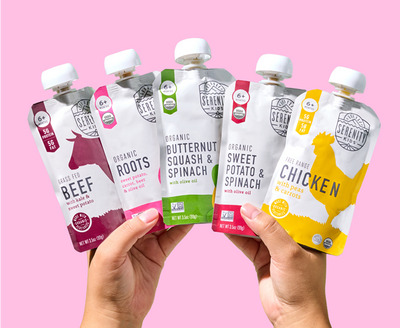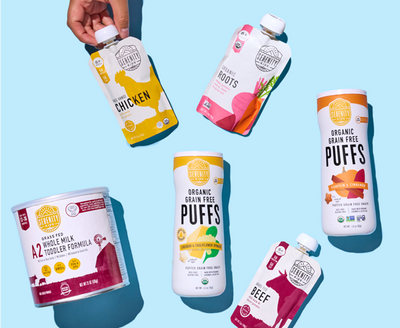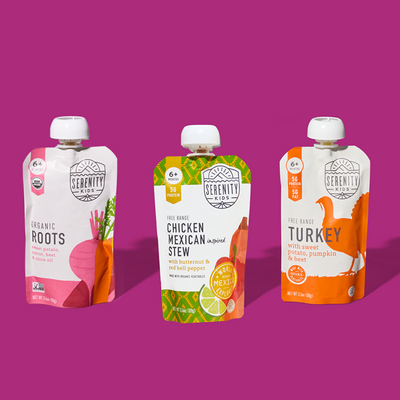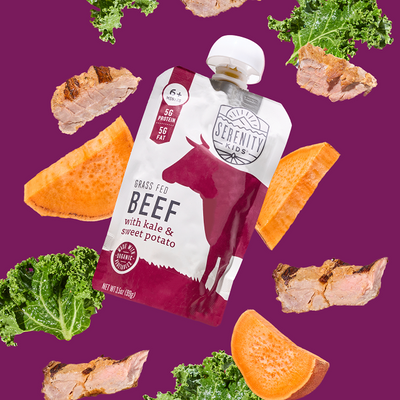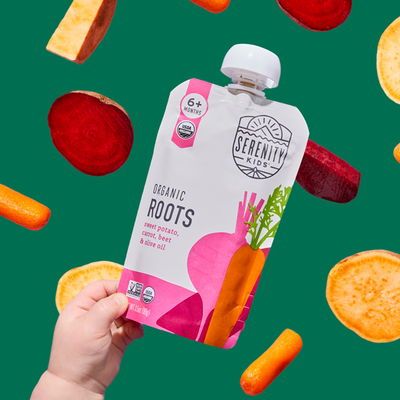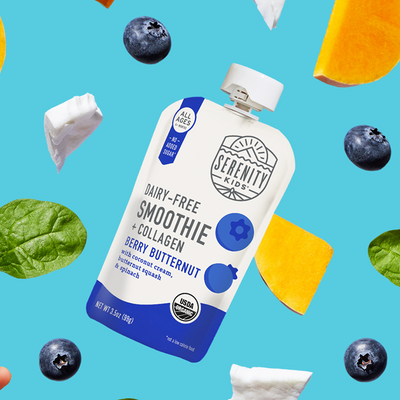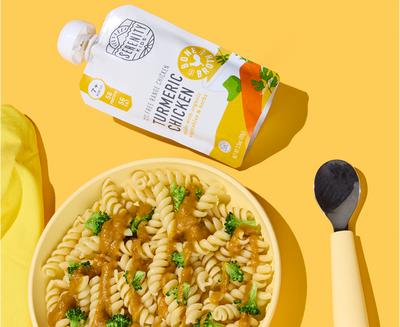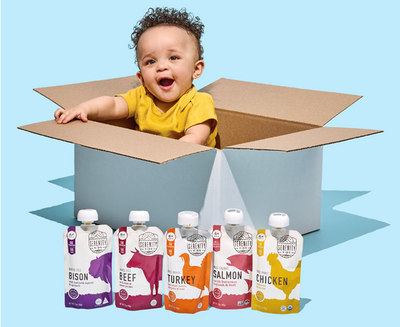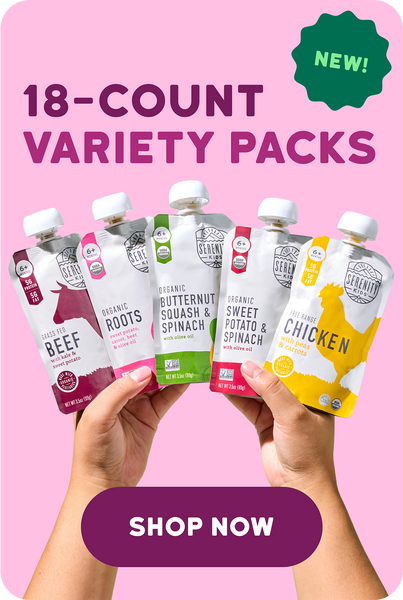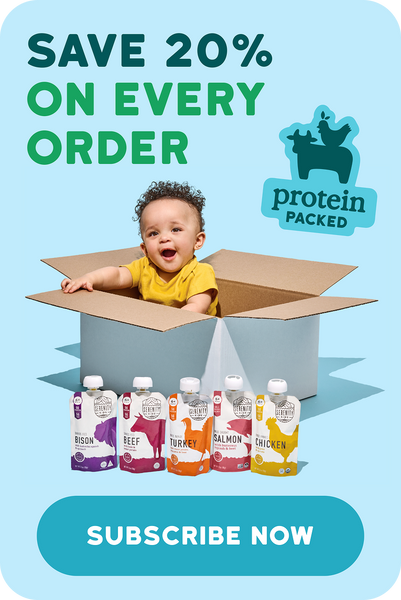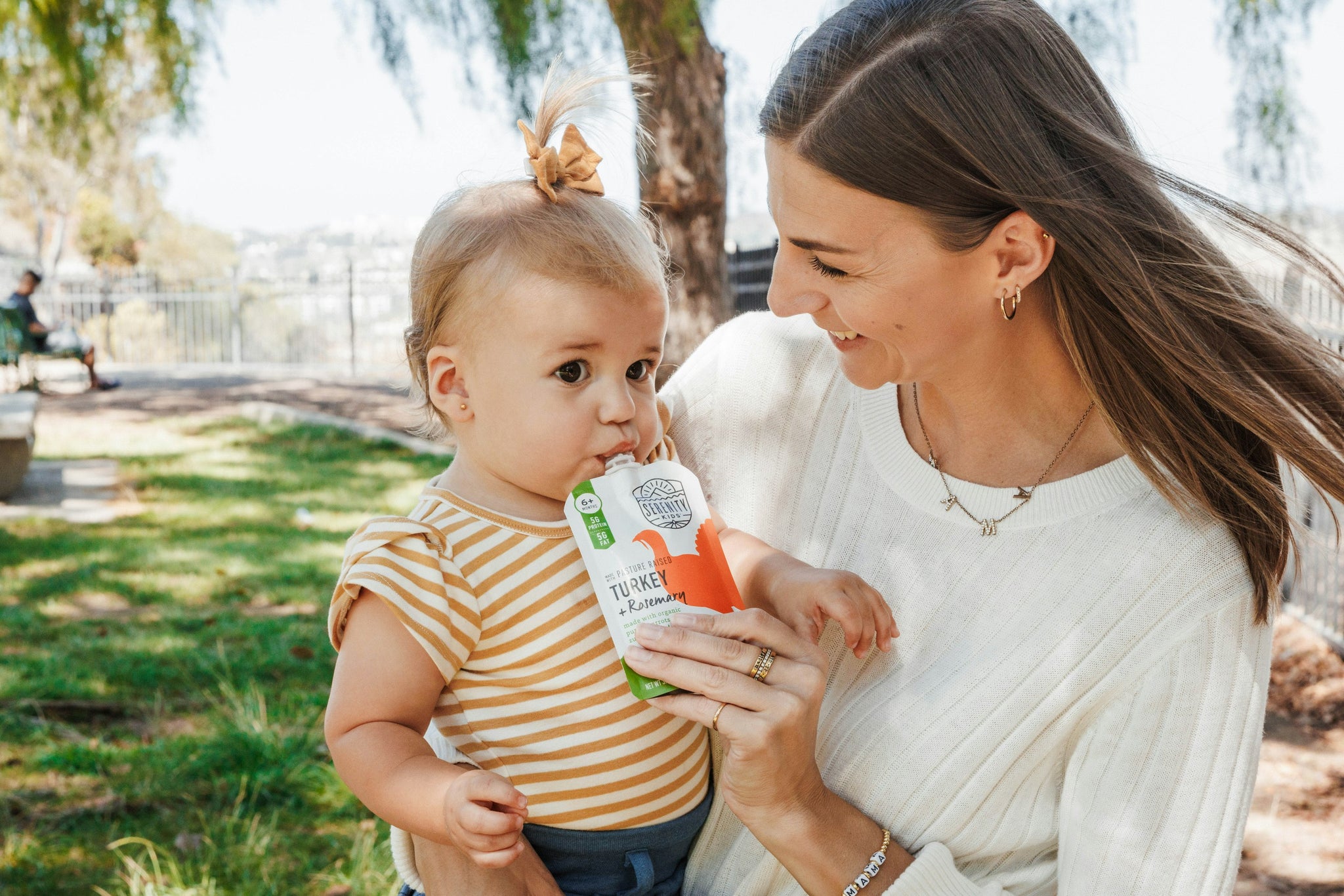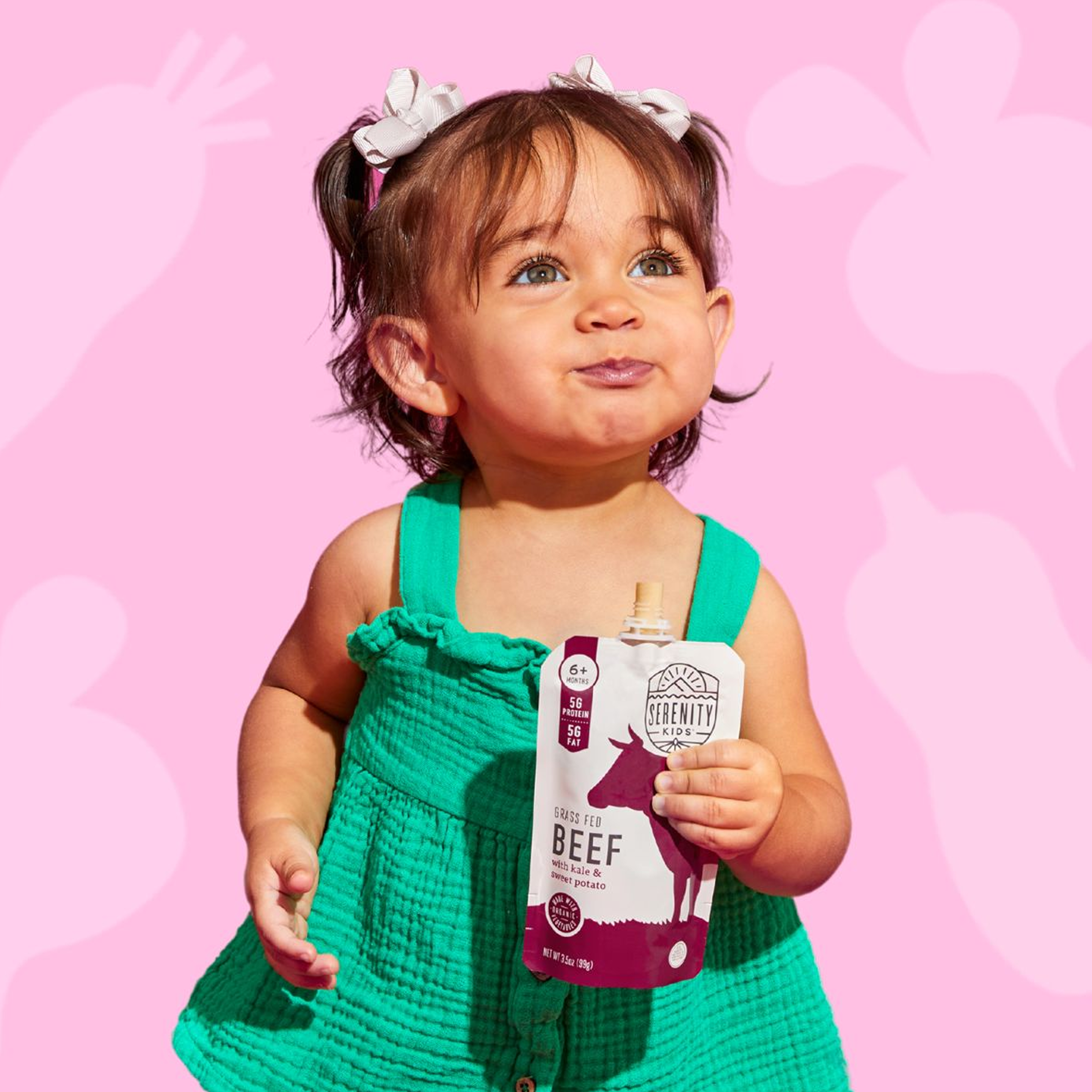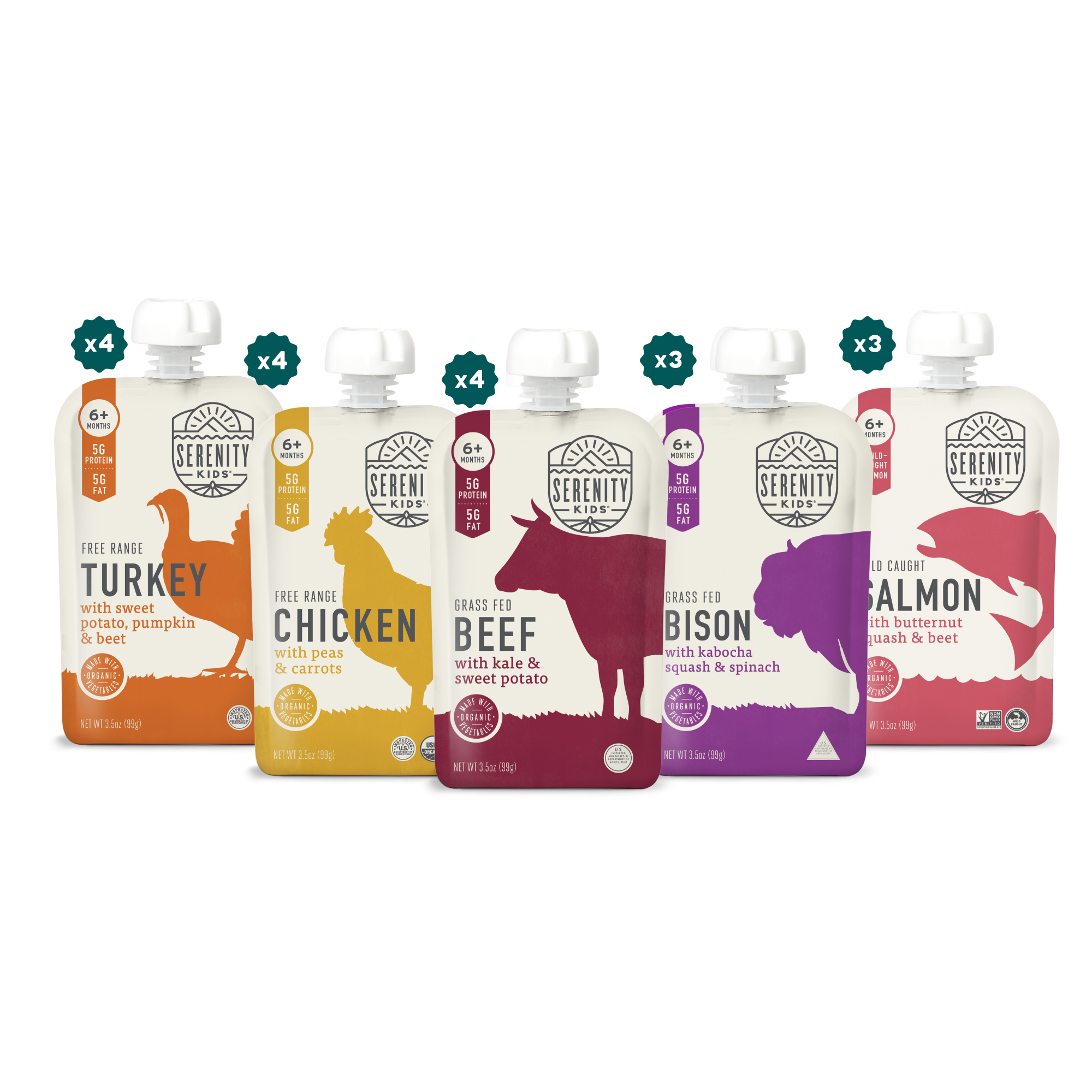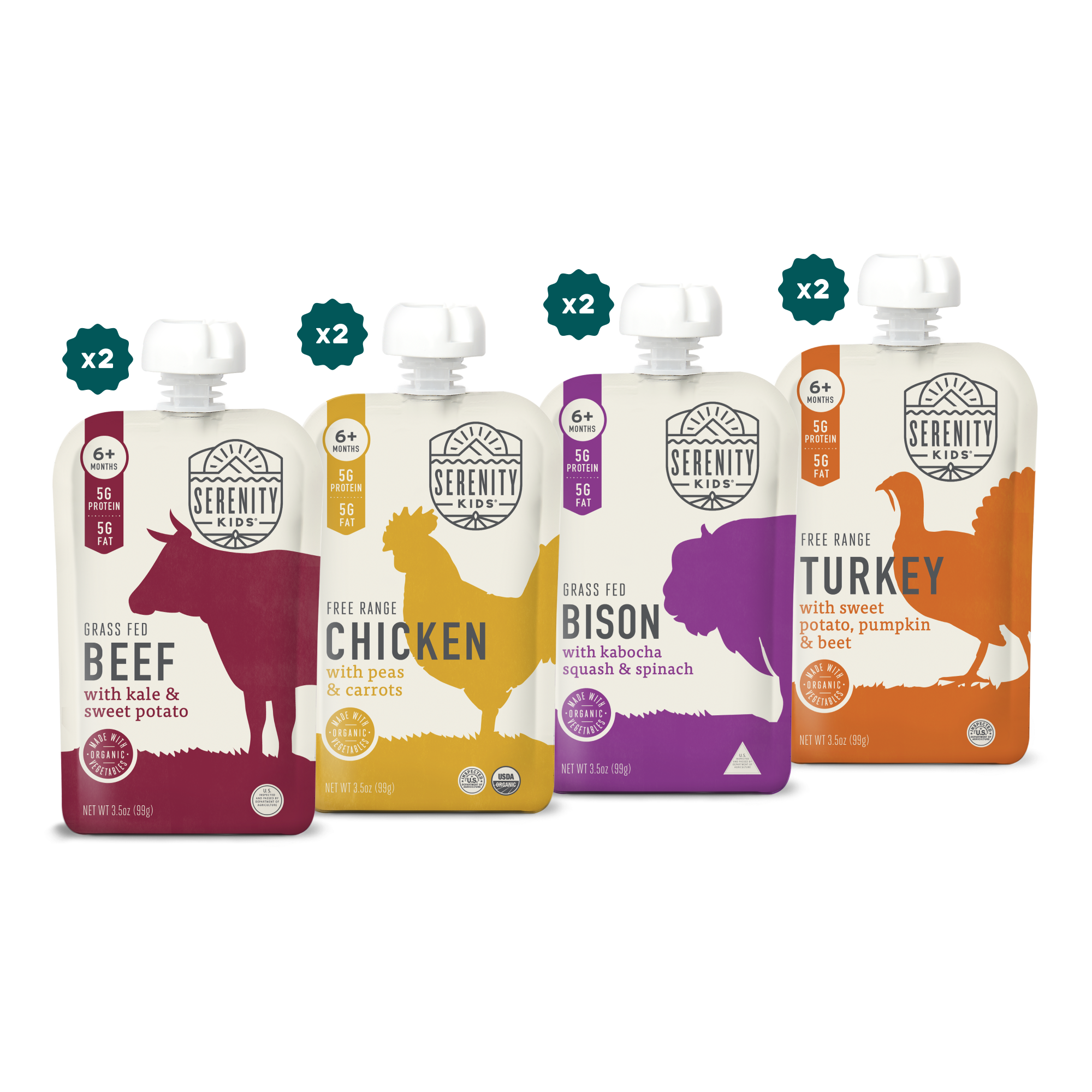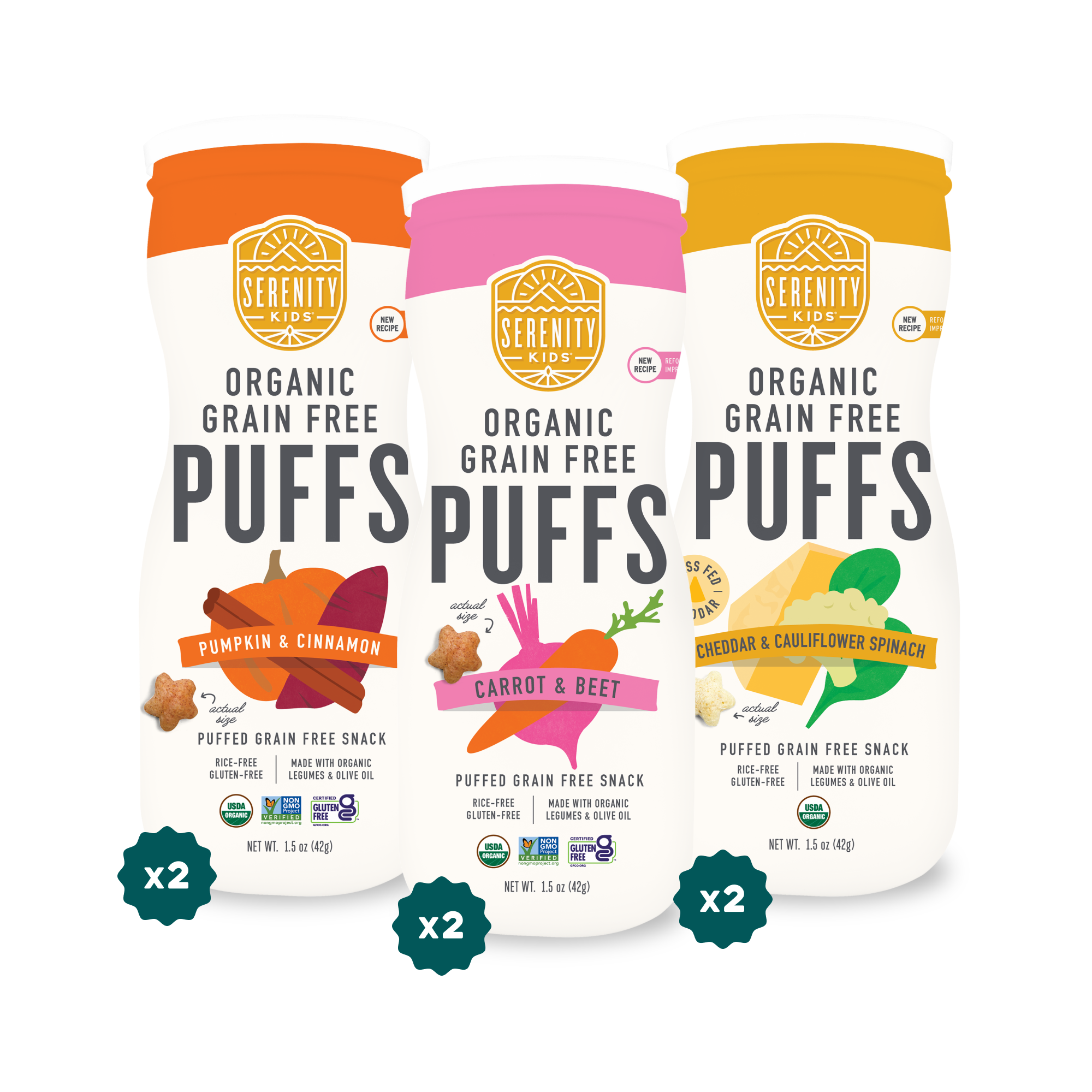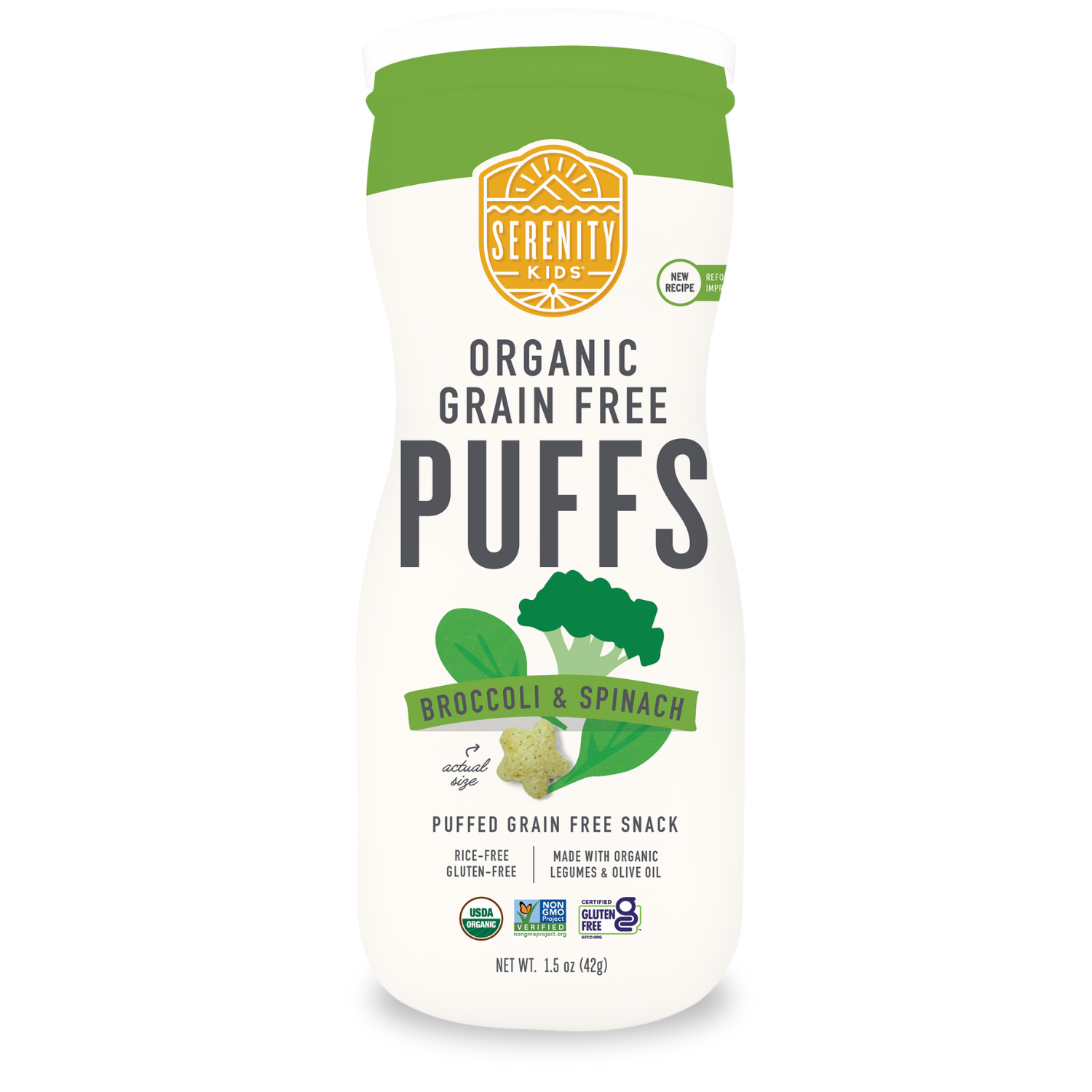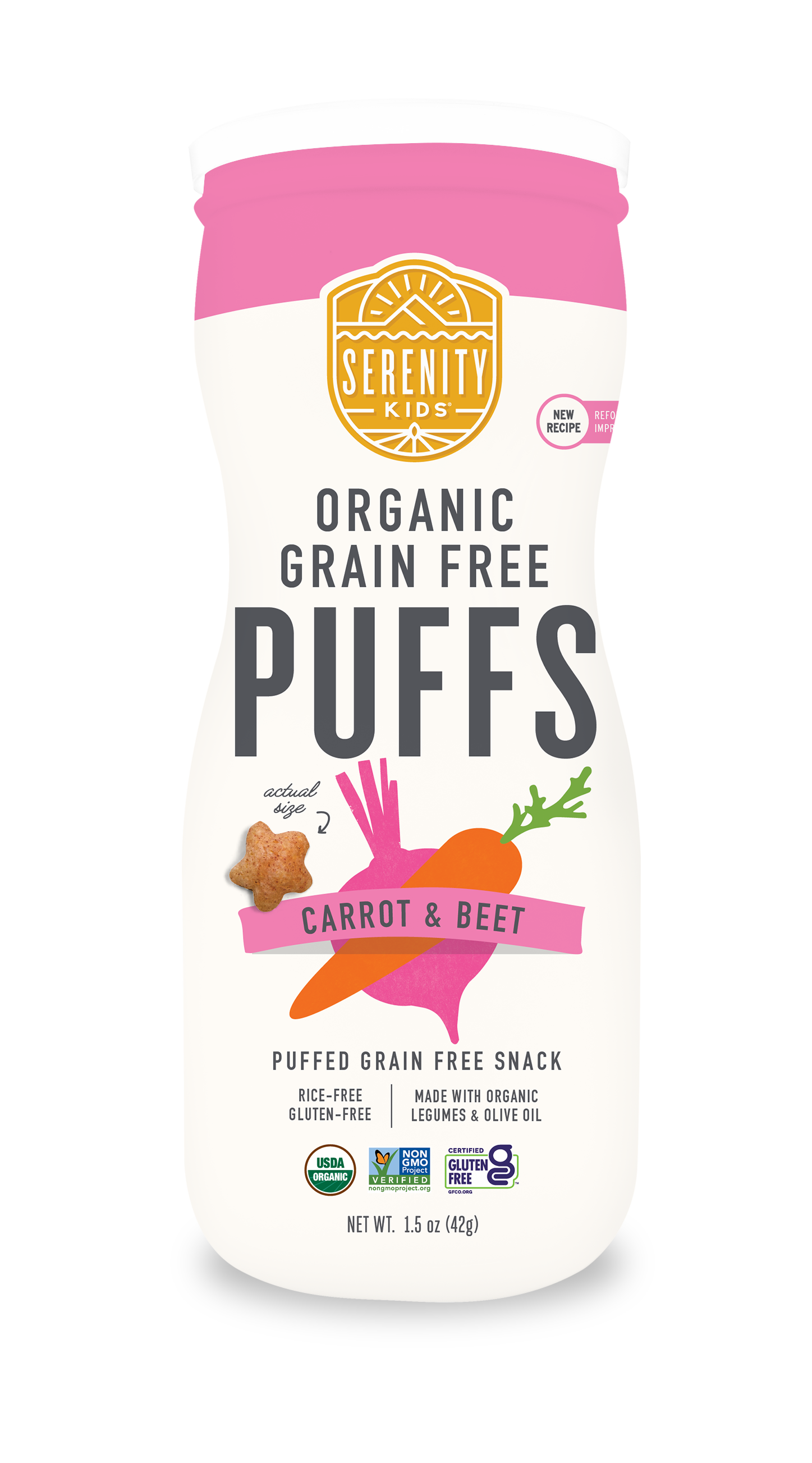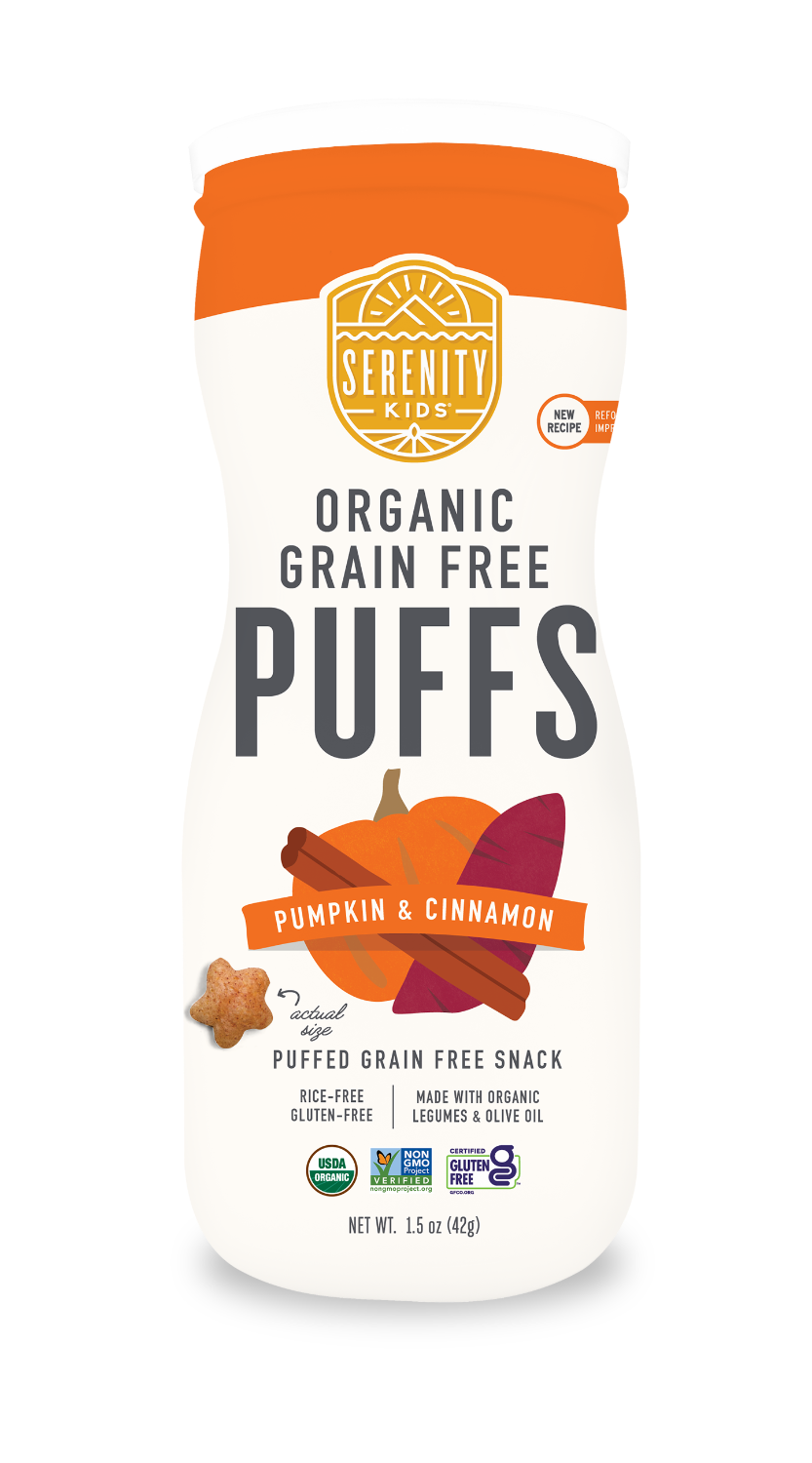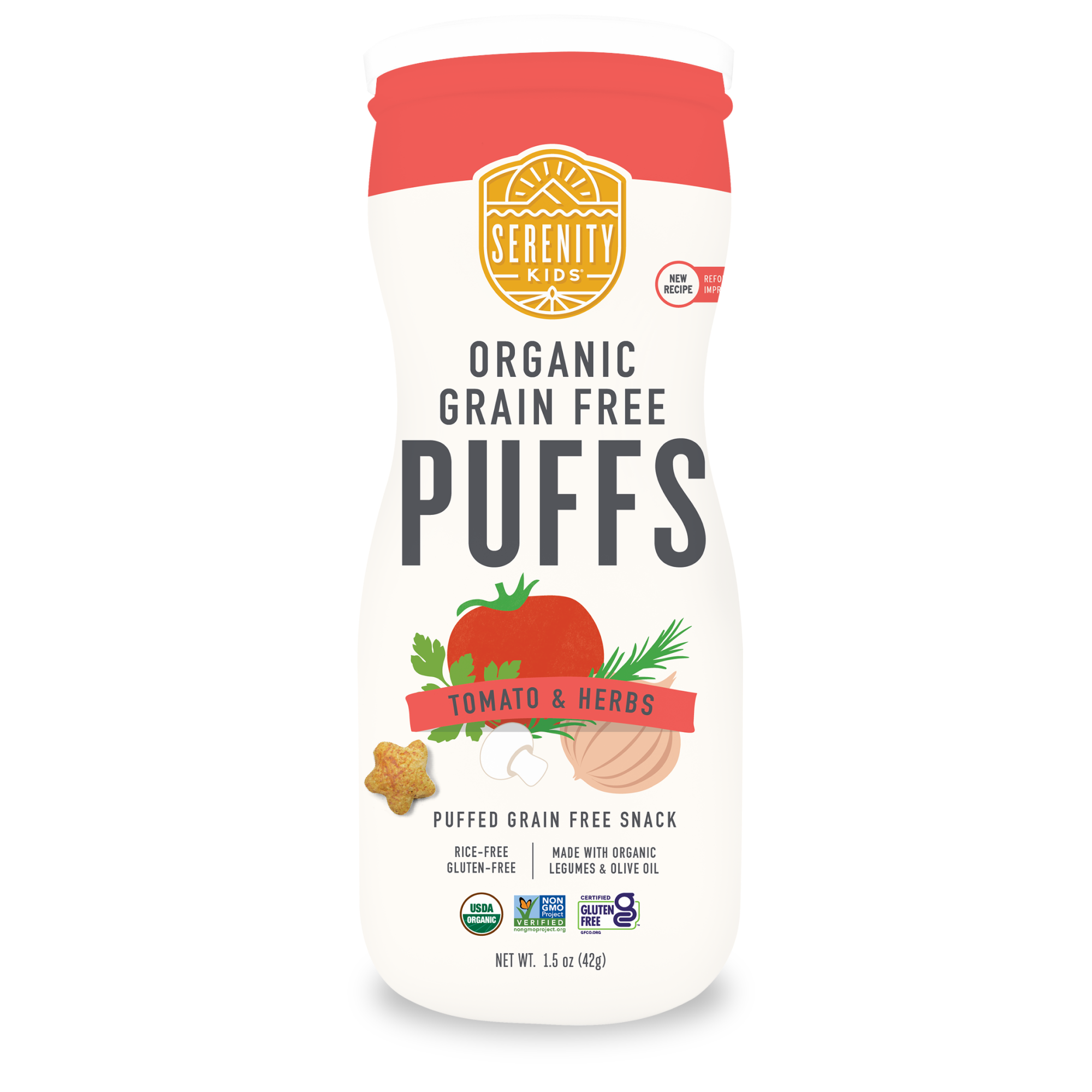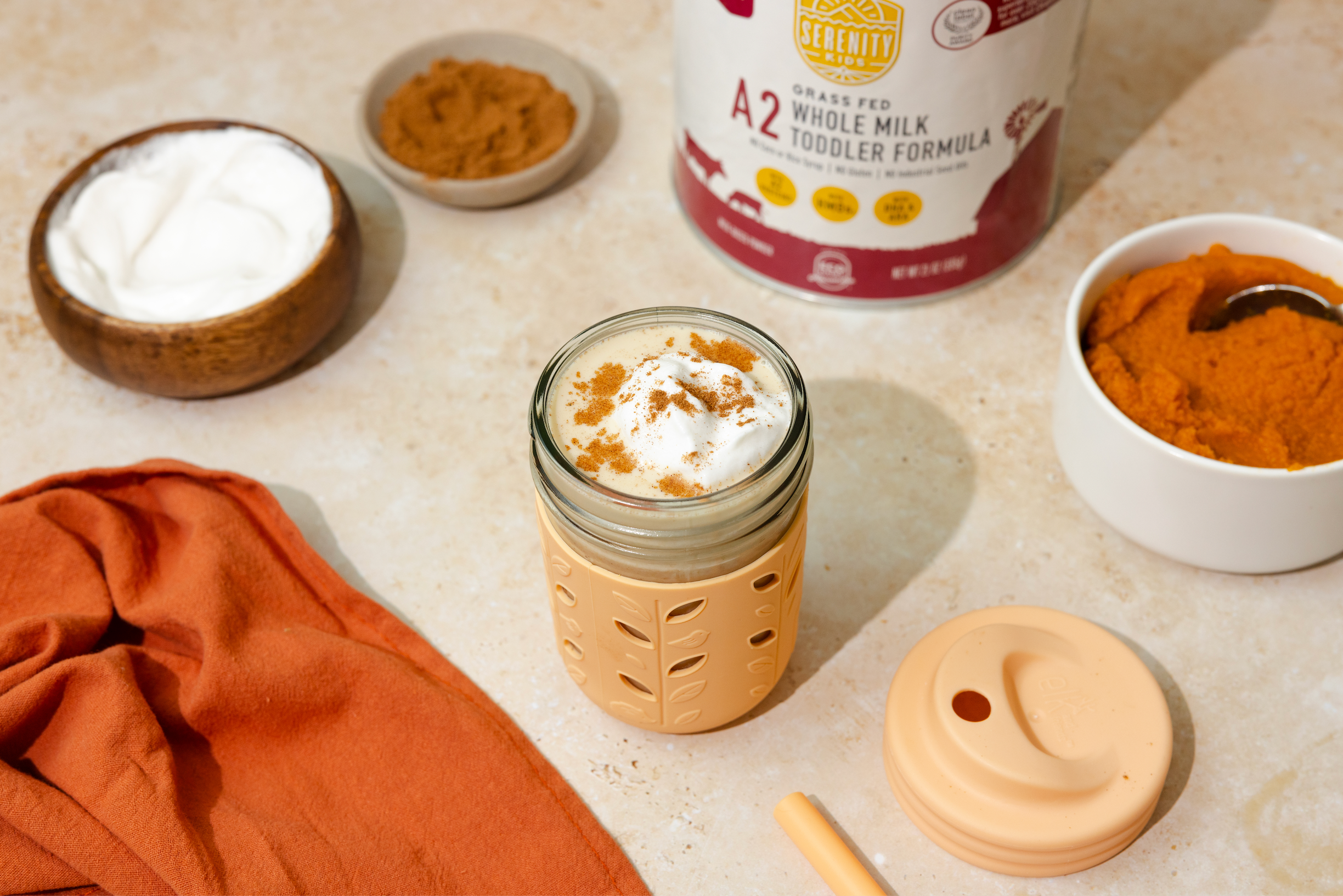In case you missed it, for the first time in history the USDA (United States Department of Agriculture) published a set of nutrition recommendations for children under 2 based on the latest research. We were thrilled to see how closely their recommendations align with our nutritional understanding and how well our products adhere to the guidelines. As you might expect of federal guidelines, they’re quite dense. So we’ll summarize the key takeaways.
But before we get into it, we wanted to share how the USDA frames the importance of proper nutrition during the first two years of life. They even share our tagline! We couldn’t agree more:
The time from birth until a child’s second birthday is a critically important period for proper growth and development. It also is key for establishing healthy dietary patterns that may influence the trajectory of eating behaviors and health throughout the life course. During this period, nutrients critical for brain development and growth must be provided in adequate amounts. Children in this age group consume small quantities of foods, so it’s important to make every bite count!
Here they are: 8 key takeaways, plus some Serenity Kids commentary.
1. For about the first 6 months of life, exclusively feed infants human milk.
The USDA says:
Exclusive human milk feeding, commonly referred to as exclusive breastfeeding (or EBF), refers to an infant consuming only human milk, and not in combination with infant formula and/or complementary foods or beverages (including water), except for medications or vitamin and mineral supplementation.
Human milk can support an infant’s nutrient needs for about the first 6 months of life, with the exception of vitamin D and potentially iron. Continue to feed infants human milk through at least the first year of life, and longer if desired.
Serenity Kids adds:
Human milk is an incredible source of nutrition for babies. It’s important to make sure mama stays nourished while feeding her little one, because nutrient content of a woman’s milk is directly related to the nutrients that she takes in herself via diet and supplementation. Learn more about nutrient needs here: Foods for Breastfeeding: What Do Mama and Baby Need?
If breastfeeding or exclusive breastfeeding isn’t an option for you, you are not alone. Please try to limit any feelings of guilt or shame, and just do what works for you and your baby. If you are curious about donor milk, you can learn more about our cofounder Serenity’s journey with donor milk here: Six Moms Fed My Baby.
In addition, there’s no limit to how long you can breastfeed, as long as it is still working for you and your little one. Some choose to continue their breastfeeding relationship well past the first birthday, while others choose to transition to toddler formula or another milk. Learn more about the various different options for milk or formula at 12+ months in this comprehensive guide: Toddler Formula: Everything Parents Should Know.
2. Feed infants iron-fortified infant formula during the first year of life when human milk is unavailable.
The USDA says:
Families may have a number of reasons for not having human milk for their infant. For example, a family may choose not to breastfeed, a child may be adopted, or the mother may be unable to produce a full milk supply or may be unable to pump and store milk safely due to family or workplace pressures. If human milk is unavailable, infants should be fed an iron-fortified commercial infant formula.
Serenity Kids adds:
Our cofounder Serenity shared her difficult breastfeeding journey (and how it inspired the development of Serenity Kids Toddler Formula) here. You can also learn more about the difference between infant formula and toddler formula here and get up to speed on formula storage and safety tips here.
3. At about 6 months, introduce infants to nutrient-dense complementary foods.
The USDA says:
At about age 6 months, infants should be introduced to nutrient-dense, developmentally appropriate foods to complement human milk or infant formula feedings.
Serenity Kids adds:
We were so excited to see them focus on nutrient density here! This has always been our focus as well, and our products are specially formulated to pack as much nutrition per bite as possible!
Looking for signs of readiness can help you identify when your little one is ready for solids. Learn about the signs of readiness and get the scoop on do’s and don’ts for introducing solids here.
Rice cereals and oatmeal are heavily marketed as first foods, but these grain-based foods are not nutrient-dense, often contain contaminants like heavy metals or pesticides, and are unnecessary. We prefer starting with whole, nutrient-dense foods like avocado, liver pate, egg yolk, pureed meats, whipped bone marrow, and our own convenient pouches.
Also know that you don’t have to commit strictly to either baby-led weaning (BLW) or purees. We explain why we love a combination of both here: Introducing Solids: Why We Love Both Baby-Led Weaning and Purees.
4. Introduce infants to potentially allergenic foods along with other complementary foods.
The USDA says:
Potentially allergenic foods (e.g., peanuts, egg, cow milk products, tree nuts, wheat, crustacean shellfish, fish, and soy) should be introduced when other complementary foods are introduced to an infant’s diet. Introducing peanut-containing foods in the first year reduces the risk that an infant will develop a food allergy to peanuts.
Serenity Kids adds:
Many parents wonder about the best way to introduce peanuts, since both whole peanuts and peanut butter are choking risks for babies. The Bamba snack is often recommended, but they also contain corn and sunflower oil, so we prefer to avoid them. We like a simple organic peanut powder like the one from NorCal Organic because they test for Aflatoxin, a type of mold that is commonly found in peanuts. A pinch can be added to any soft food or drink. You can also use a product like Ready Set Food to conveniently support your allergen introductions.
5. Encourage infants and toddlers to consume a variety of foods from all food groups.
The USDA says:
Parents, caregivers, and guardians are encouraged to introduce foods across all food groups, including items that fit within a family’s preferences, cultural traditions, and budget. Complementary foods and beverages should be rich in nutrients, meet calorie and nutrient requirements during this critical period of growth and development, and stay within limits of dietary components such as added sugars and sodium.
To support nutrient adequacy, foster acceptance of healthy foods, and set intakes on a path toward a healthy pattern, it is important to encourage foods from all food groups. Because very young children are being exposed to new textures and flavors for the first time, it may take up to 8 to 10 exposures for an infant to accept a new type of food. Repeated offering of foods such as fruits and vegetables increases the likelihood of an infant accepting them.
Serenity Kids adds:
Yes, variety is hugely important both for nutritional diversity and palate development. We are proud to say we offer a larger variety of ingredients and flavors than any other baby food company. The importance of introducing a variety of flavors is what inspired many of our recipes, like our bone broth and meat + herbs pouches. If you’re looking to dig in more on why this matters, check out Introducing the Flavor Window: Why Early Food Varieties are Important.
And unfortunately, data from the guidelines (shown below) shows that most babies are getting not enough proteins and veggies, but more than enough grains, dairy, and fruit. An easy way to increase those protein and veggie amounts is with Serenity Kids meat and veggie pouches!

6. Include foods rich in iron and zinc, particularly for infants fed human milk.
The USDA says:
Iron-rich foods are important components of the infant’s diet from age 6 through 11 months to maintain adequate iron status, which supports neurologic development and immune function. Infants are typically born with body stores of iron adequate for about the first 6 months of life, depending on gestational age, maternal iron status, and timing of umbilical cord clamping. By age 6 months, however, infants require an external source of iron apart from human milk.
Zinc-rich complementary foods are also important from age 6 months onwards to support adequate zinc status, which supports growth and immune function. Although the zinc content of human milk is initially high and efficiently absorbed, the concentration declines over the first 6 months of lactation and is not affected by maternal zinc intake.
It is important to note that the USDA states that without supplements and/or fortified products, it is not possible for a child under 24 months to meet all nutrient goals with a vegan diet, and the risks of failing to follow supplementation advice are severe. The USDA recommends 7-9 ounces of protein per week for children aged 12-24 months.
Serenity Kids adds:
Iron and zinc are incredibly important for babies, and the best source of these is from meat and animal products. Meat contains heme iron, which is better absorbed than iron from plant foods, called non-heme iron. In addition, iron-fortified cereal and puffs are low in nutrition and the form of iron commonly found in these foods can be constipating and not well absorbed.
In addition, the USDA cites a position paper on Complementary Feeding by the European Society for Paediatric Gastroenterology, Hepatology, and Nutrition (ESPGHAN) Committee on Nutrition which notes that the risks of not properly supplementing a vegan diet are severe, including irreversible cognitive damage from vitamin B12 deficiency. Simply adding high-quality meat to your child’s diet can eliminate the need for supplementation and mitigate the serious risks of nutrient deficiencies from a vegan diet that is not meticulously supplemented. At the end of the day, we much prefer nutrients from real food, not synthetic supplements.
And for the record, iron and zinc aren’t the only reasons we love meat for babies. We explain 5 reasons why it's a great first food here.
We make feeding babies meat both simple and convenient with our lineup of meat pouches. Other foods rich in iron and zinc include bone marrow and liver (p.s., learn how to make liver bone broth here.)
7. Avoid foods and beverages with added sugars.
The USDA says:
Infants and young children have virtually no room in their diet for added sugars. This is because the nutrient requirements for infants and young children are quite high relative to their size, but the amount of complementary foods they consume is small. Complementary foods need to be nutrient-dense and not contain additional calories from added sugars. In addition, low- and no-calorie sweeteners, which can also be called high-intensity sweeteners, are not recommended for children younger than age 2. Taste preferences are being formed during this time period, and infants and young children may develop preferences for overly sweet foods if introduced to very sweet foods during this timeframe.
One type of added sugar is particularly important to avoid: infants should not be given any foods containing raw or cooked honey. Honey can contain the clostridium botulinum organism that could cause serious illness or death among infants.
Serenity Kids adds:
PREACH! This was one of our favorite parts of the guidelines given the impact sugar is having on today’s children - sugar can affect everything from blood sugar dysregulation and obesity to mood and dental concerns. We never include added sugars in any of our products, and we’re one of the only baby foods that focuses on a balanced macronutrient profile. We combine the rich and savory flavors of veggies, meats, healthy fats, herbs, and spices to create nutrient-dense food that babies love. We explain more about why here: When it Comes to Baby Food, Sugar Isn’t So Sweet.
8. Limit foods and beverages higher in sodium.
The USDA says:
Sodium is found in a number of foods, including some salty snacks, commercial toddler foods, and processed meats. In addition to keeping sodium intake within limits for toddlers, another reason to avoid high-sodium foods is that taste preferences for salty food may be established early in life. Choose fresh or low-sodium frozen foods, when available, and low-sodium canned foods to minimize sodium content.
Serenity Kids adds:
Salt is a hot topic for parents, so we dive into the sodium recommendations, including why and how they exist in this article: When Can Babies Have Salt? The Scoop on Sodium and Baby Food – Serenity Kids
You can rest easy knowing that many of our pouches have no added salt, while others include just a pinch of Himalayan salt to enhance our savory flavors.
Conclusion
Nourishing babies and kids is our passion, and we know it can be stressful for new parents learning about childhood nutrition. Helping you understand what your child needs and what works for your family is a key part of our mission at Serenity Kids. We hope this summary of nutrition guidelines for children under the age of two helps you make educated choices and breathe a little easier.

